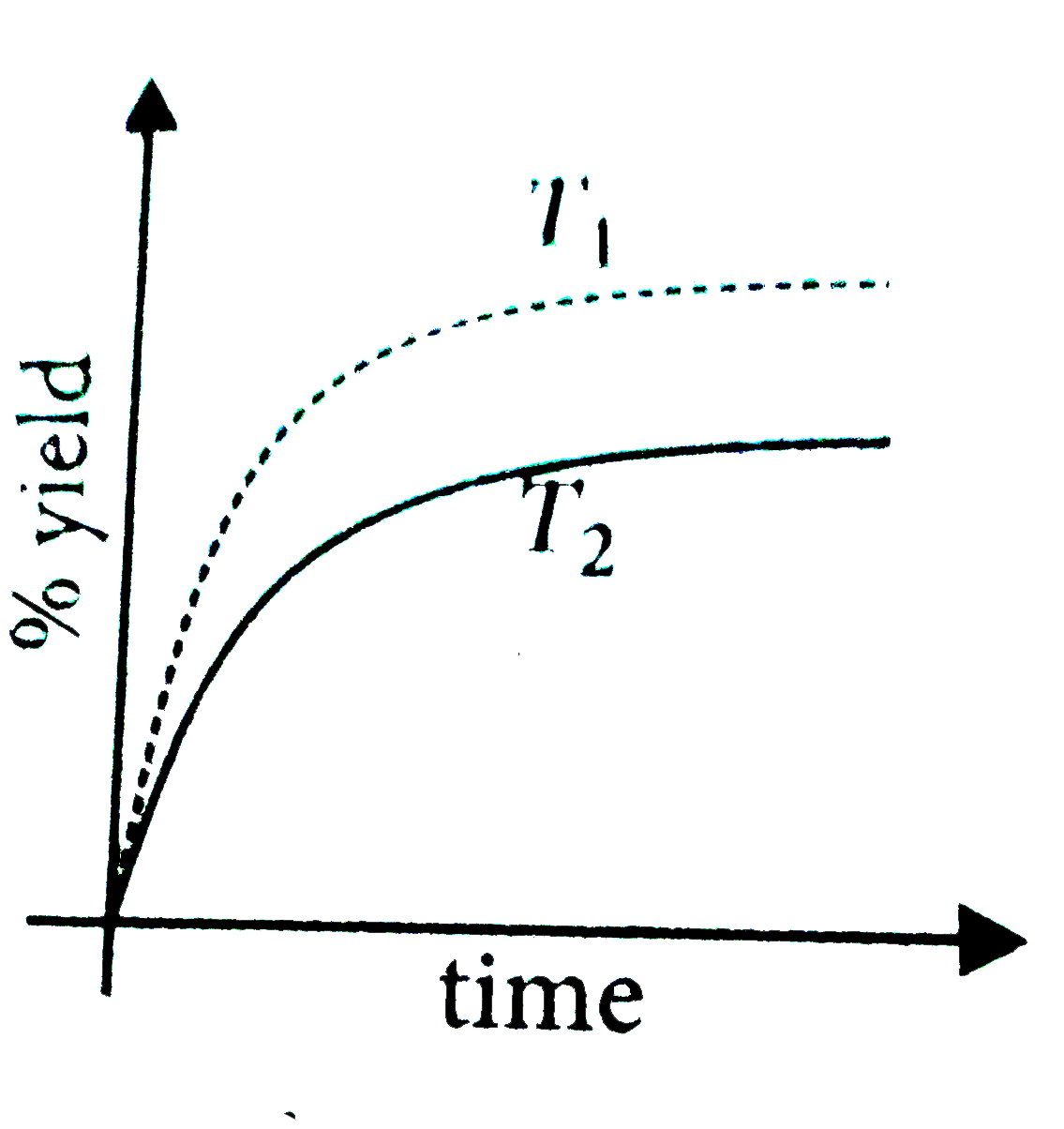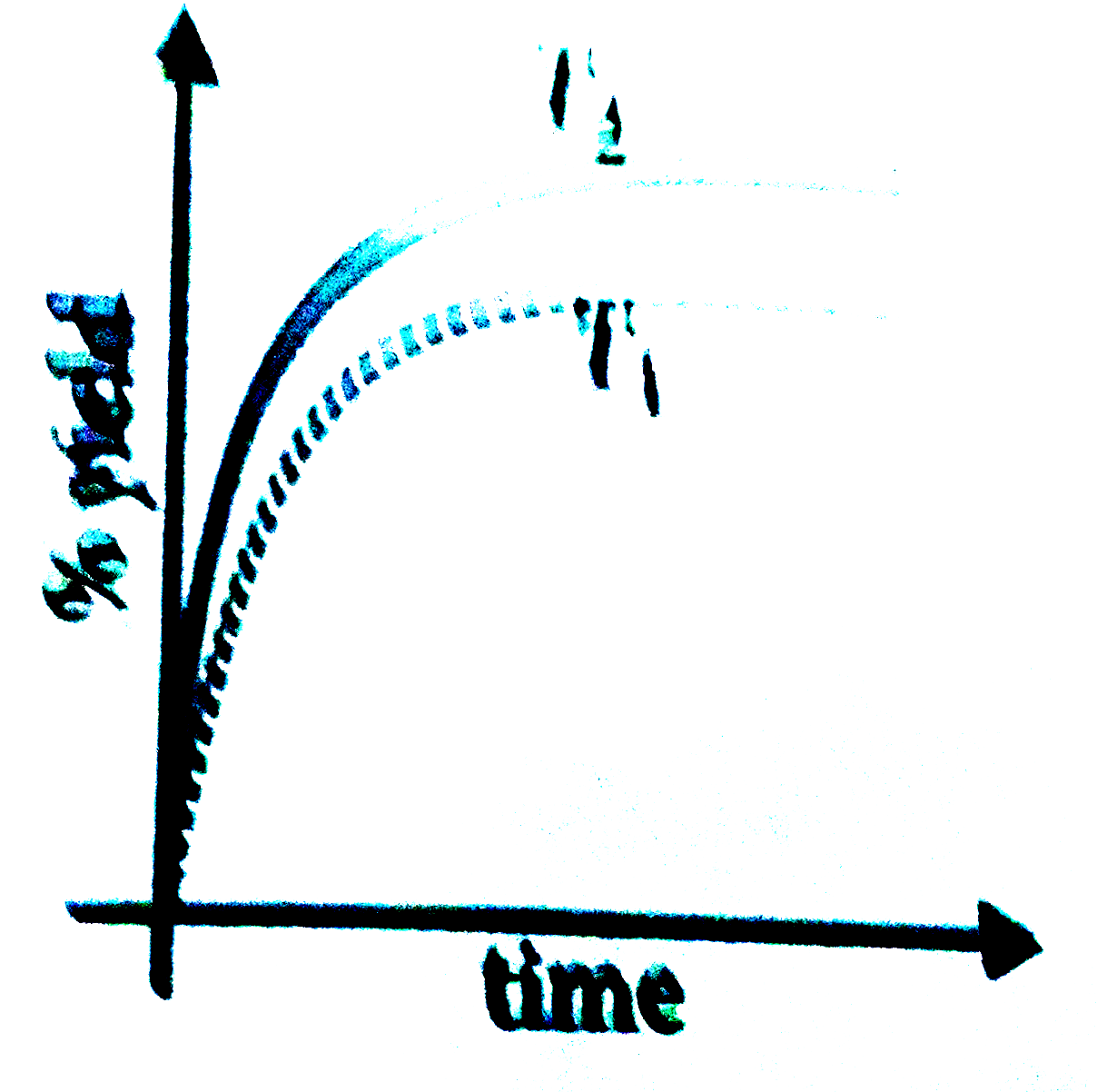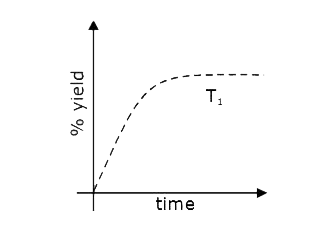The % yield of ammonia as a function of time in the reaction, N2(g)+3H2(g)⇔2NH3(g)'ΔH<0
at (p,T1) is given below

If this reaction is conducted at (p,T1), with T2>T1 the % yield by of ammonia as a function of time is represented by
A

B

C

D

Video Solution
Text Solution
The correct Answer is:B
N2(g)+3H2(g)exo⇐⇒endo2NH3(g),ΔH<0
Initially, with increase in temperature (T2>T1)% yield increases.
Afterwards, equilibrium is reached and if the temperature is increased, i.e., heat supplied to the system, then according to Le Chatelier's principle, the equilibrium will shift in the backward sirection, where the heat is absorbed. Hence, the % yield decreases.
|
Topper's Solved these Questions
- EQUILIBRIUM Book:NCERT FINGERTIPSChapter:EQUILIBRIUM Exercise:NCERT Exemplar
Explore 19 Videos
- EQUILIBRIUM Book:NCERT FINGERTIPSChapter:EQUILIBRIUM Exercise:Assertion And Reason
Explore 15 Videos
- EQUILIBRIUM Book:NCERT FINGERTIPSChapter:EQUILIBRIUM Exercise:Solubility Equilibria Of Sparingly Soluble Solids
Explore 15 Videos
- ENVIRONMENTAL CHEMISTRYBook:NCERT FINGERTIPSChapter:ENVIRONMENTAL CHEMISTRYExercise:Assertion And Reason
Explore 15 Videos
- HYDROCARBONS Book:NCERT FINGERTIPSChapter:HYDROCARBONS Exercise:Assertion And Reason
Explore 15 Videos
Similar Questions
The % yield of Ammonia as a function of time in the reaction N2(g)+3H2(g)⇔2NH3(g),ΔH<O at (P,T) is given below:

If this reaction is conducted at T2>T1, then plot the % yield of NH3 as a function of time on same graph
View SolutionFor the reaction, N2(g)+3H2(g)⇔2NH3(g), the units of Kp are …………
View Solution
Knowledge Check
The % yield of ammonia as a function of time in the reaction N2(g)+3H2(g)⇔2NH3(g),(g)ΔH<0 at (P,T1) is given below
 A
A B
B C
C D
D
For the reaction
N2(g)+3H2(g)⇔2NH3(g),ΔH=?AΔE+2RTBΔE−2RTCΔE+RTDΔE−RTThe percentage yield of ammonia is a function of time in the reaction N2(g)+3H2(g)⇔2NH3(g),△H<0
at (pT1) is given below
If this reaction is conducted (p1T1) with T2>T1, the percentage yeild of ammonia as a function of time is represented by.A B
B C
C D
D
Which of the following is correct for the reaction?
N2(g)+3H2(g)⇔2NH3(g)
View SolutionWhich of the following is correct for the reaction?
N2(g)+3H2(g)⇔2NH3(g)
View SolutionWhich of the following is correct for the reaction?
N2(g)+3H2(g)⇔2NH3(g)
View SolutionFor the chemical reaction
N2(g)+3H2(g)⇔2NH3(g)
The correct option is:
View SolutionFor the chemical reaction
N2(g)+3H2(g)⇔2NH3(g)
The correct option is:
View Solution

